Inside a Maya Family Compound
In his cupped hands he holds a baby turkey, a poult, only a few weeks old. It has a piece of red wool drawn through the skin on the top of its head which stands up, as if the poult sports a modern hairstyle.
“This red string is to ward off evil spirits and keep the baby turkey healthy,” says Abel who lives in this Maya family compound. “Only four out of ten baby turkeys will survive.”
We are guests inside Abel’s family compound located in Santa Elena, a Maya village along the Ruta Puuc (hilly route) in the southern part of Yucatan state in Mexico. Abel is one of eight in a family still led by his father, 72, and his mother, 62. Numerous other relatives, including Abel, his wife and two children, live there. The International Women’s Club of Merida is supporting an awareness initiative focusing on the needs of these people.
The Maya have a history of about 3,000 years in the Yucatan Peninsula. Today, just as in ancient times, their basic food source is corn. Abel explains how the very dry and colder than unusual fall season has taken its toll. Corn production was reduced by more than 30 percent; honey production reduced by over 40 percent. “60 percent of the people in Santa Elena work in the honey industry,” he says. No rain meant corn plants shrivelled; fewer flowers and cold temperatures “kept the bees in the hives” living on their own honey. With no product to sell, while still forced to buy corn for tortillas and poultry feed, the proudly independent people of Santa Elena are facing an economic crisis.
The Maya compound is built on bare earth surrounded by a carefully and artfully constructed wall of loose stones and rocks, a staple of the Yucatan countryside. Abel invites us into his functional oval-shaped Maya home constructed of stone and stucco with a roof of palapa (palm fronds). The traditional Maya house is a single room with rounded corners, no windows, and one central door built to face east.
“My father built our home 57 years ago,” he says with justifiable pride, “and the roof has only been replaced twice.” A hammock hangs from the poles and beneath our feet, the earthen floor. It won’t be long, though, before the earth floor is replaced by cement, thanks to a government project.
It also won’t be long before the traditional Maya home will be a reminder of the past, however. Abel mentions that each year 400 villagers head to the U.S. as migrant farm workers and each year they return with new ideas for modernizing their homes.
We move on to the cooking hut adjacent to the Maya home where Abel’s female relatives are cooking tortillas on a flat grill set over rocks. After removing them from the heat they are dusted with salt. Rolled like a cigar, warm tortillas are offered as a tasty reminder of our visit. Corn tortillas, prepared in the traditional way, are delicious! Hollowed out large gourds from the garden are used to keep the tortillas warm while smaller gourds are used as drinking cups set on a holder of intertwined vines. Every possible gift from nature is used.
We walk to the batea (laundry shelter). Ashes from the cooking fires are placed in buckets of water to soften the hard water native to this area. Then clothes are individually pounded and washed on a table-high stone counter with lots of elbow grease and a hard bar of soap. A shower is a bucket of water poured over the body along with a solid scrub of soap suds. In an environment of mostly earth, the older women are adorned in snow-white huipiles (traditional dress) edged in embroidered, brightly-colored patterns while the younger ones favour western dress.
Roaming turkeys, chickens, pigs and puppies share the earthen compound. Pigs are highly valued and when ready for market, the word spreads quickly throughout the village. Often a piglet is given to another family to encourage self-sufficiency. Turkeys fattened on corn, and tortilla dough provides additional income.
Every other day or so, members of the family take their tricicleta (three-wheeled cart) out to a nearby forest to collect wood for cooking. This is their only source of fuel, and if you have driven into the Yucatecan countryside, you can see the neat bundles of wood ready for collection by the side of the road.
When there is corn to harvest, the family picks and shucks the dried corn kernels. The next morning the women take a bucket of corn kernels to the local tortilleria in exchange for masa (corn flour) from which come those delicious tortillas. Kernels are no longer ground by hand because even the smallest village seems to have its own tortilleria.
As he moves about the compound, Abel is obviously proud of his Maya heritage and of the independence of his people. They are warm and welcoming and as curious about us as we are of them. To get over the current economic slump, however, they can get by with a little help from their friends.




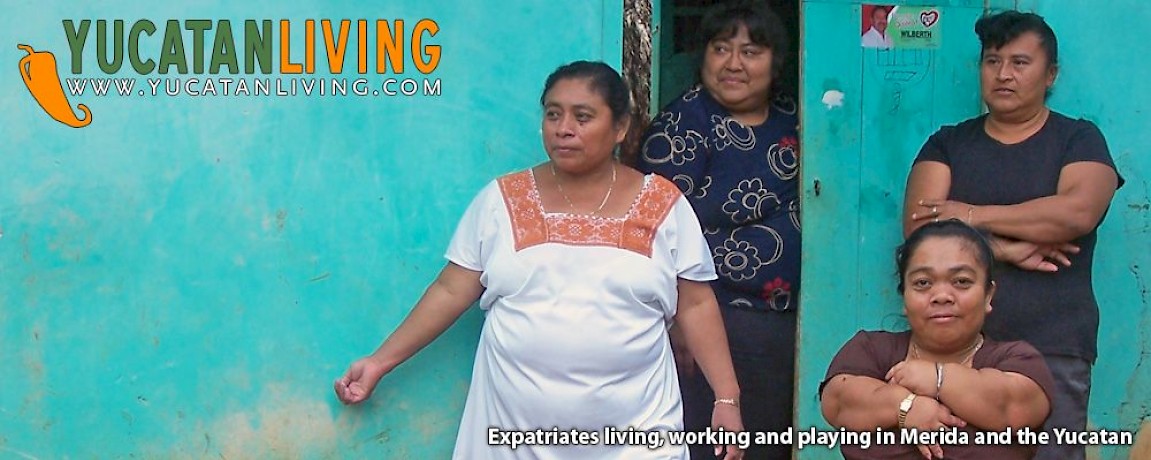


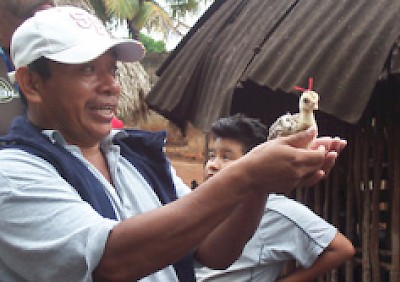
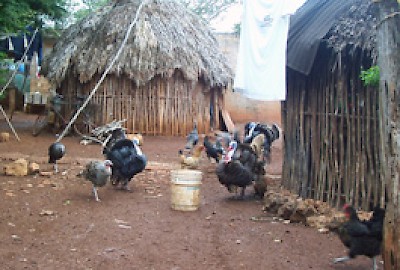
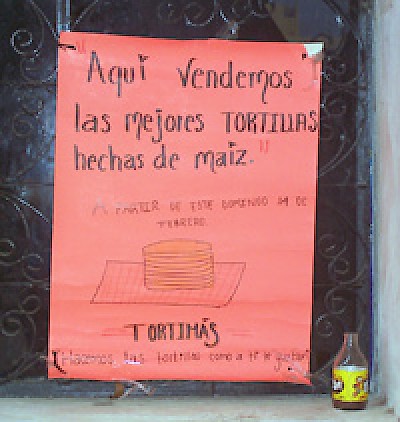
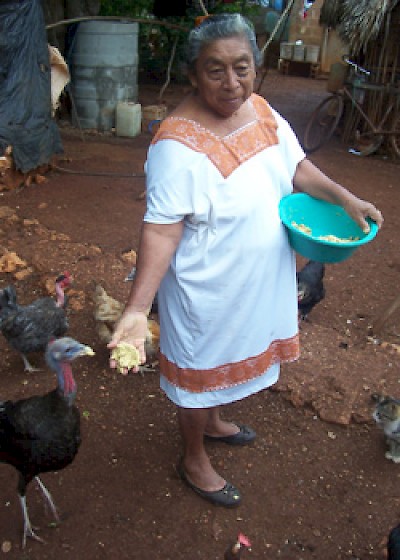
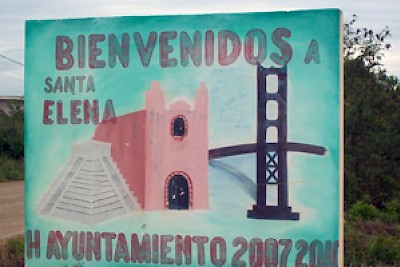

Comments
Carlos Oliva 15 years ago
Recognition of the value of their culture is also so important for my countrymen. So please let them know how important is their culture and their traditions. Additionally, you can learn Mayan from them, and so contribute to Mayan language preservation.
Reply
Valerie Pickles 15 years ago
Heather this was such a joy to read and Abel was so excited when I told him he and his family are featured on web pages and blogs and that it would be viewed by poeple all over the world.Yes I agree this is not the only family that is in need but again thanks to the publicity of one family it may open the eyes of many people to see what is needed in their own new community .We all learn from each others experiences and knowledge and the inspiration generated from articles like this will I am sure inspire many more people.
The insight I have gained by living, working and socializing with the local people is that they know how to live from day to day and let tomorrow take care of itself . A concept that the materialistic world from which we come is striving to find these values and here they live it ! from their view... Whats done is done and whats said is said forget it and continue on....what more wisdom than this do we need to live by?
Again thanks Heather
Just one last thing I would like to mention about the Compund The Batea is the name of the laundry tub that they use which used to to be made out of one piece of a log carved out .Now they are made from cement poured into a mold and brightly coloured ones too !
Reply
Eduardo 15 years ago
If you give a man a fish he will have a single meal. If you teach him how to fish, he will eat all his life.-- Kuan-tzu (Chinese Philosopher)
Support them, go to http://www.thepickledonionyucatan.com and eat there.
Reply
Joanna van der Gracht de Rosado 15 years ago
I was at Santa Elena today and went with Abel to see a little know Mayan site called X'coot. I agree with Beryl, the best way to support the traditional values found in the countryside is by purchasing the residents products and services.
Reply
Beryl G 15 years ago
I enjoyed reading this excellent article. Yes, I agree with everyone else that one way to support people in the villages is to buy their wares. Even if you stop off and buy a coke from a little tienda, it's something. Also, I'd like to mention Valerie Pickles, owner of The Pickled Onion in Sta. Elena gives a number of villagers good jobs. And it's a great restaurant, featuring Maya dishes. See: www.thepickledonionyucatan.com
Thanks Heather, for your insights and social consciousness.
Reply
Greer Lavery 15 years ago
An excellently written article - the descriptions were so realistic they made me feel as if I'd been there myself. Well done Heather!
Reply
Shirley Frazer 15 years ago
Very interesting and informative article. I would like to know more about these lovely people. What do they do for fun, education, religion,medical, etc?????
From previous articles they seem happy and relaxed. What is the secret ?
I wish you would write more as to your life and experiences as it is interesting, educational and many times quite humorous. I always long for the next adventure of the now semi- gringo and her personal observations of her fairly new and loved second home.
Shirley
Reply
Jorge 15 years ago
Hi, I was born in the Yucatan and have relatives that live in small villages just like the one shown in this article. If anybody wants to help I think the best way to do it is by consuming their products, by educating them in new fields and when hiring them to do any kind of job, paying them what is right, not the Mexican minimum wage which i believe is now around $40.00 USD per week.
Reply
Working Gringos 15 years ago
Let us point out that this is just one family among many... a family that a group of women from the International Women's Club have decided to help. We applaud their efforts, but want to make sure that they are not the ONLY family that receives help just because they have gotten some publicity.
To see what a group of women have been doing with this particular family, you can read the blog posts (and the comments!) here:
http://joannavandergrachtderosado.wordpress.com/community-development/
There are many ways to help here, especially when you live here. You can support the education of children (we wrote about that here:
http://www.yucatanliving.com/daily-life/apoyo-program-for-students-in-progreso.htm
and here:
http://www.yucatanliving.com/daily-life/cloning-the-apoyo-program.htm
The group in Cholul that we mentioned in the second article has evolved into EducaTE Yucatan at www.educateyucatan.org.
You can support artisans who are working to support their families by buying locally made goods at the AANY shows or whenever you see goods for sale in the pueblos.
The most effective means of support and help is education, training and friendship... those are gifts that keep on giving.
Reply
Tom Barton 15 years ago
Excellent article. Could you suggest ways that we could help?
Reply
John Venator 15 years ago
A nice feature article some what different than some of your usual stories. Let's see more in the future
Reply
(0 to 11 comments)Next »